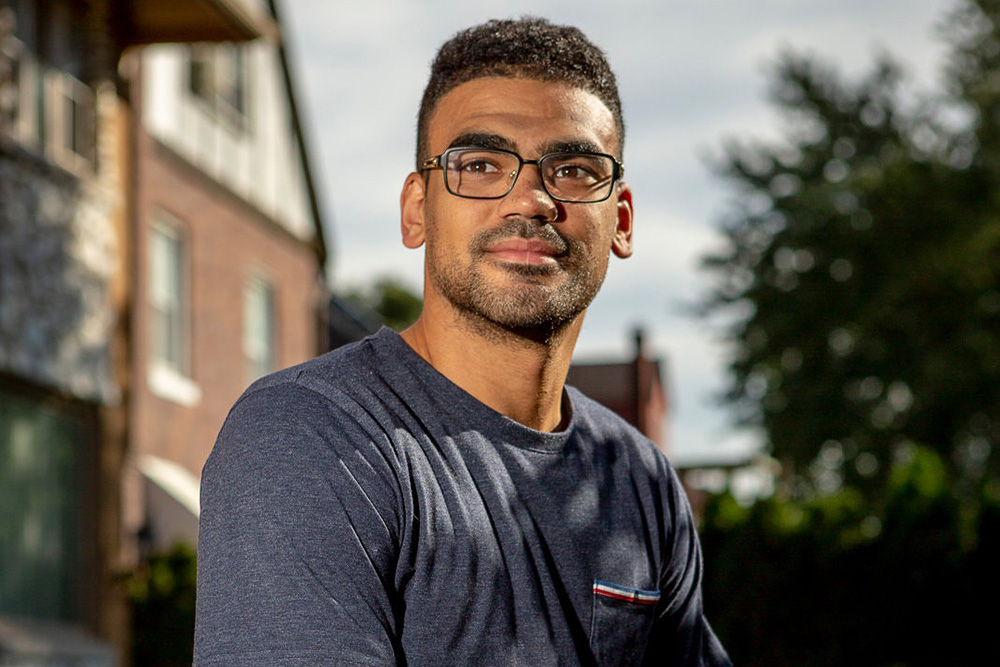In Gabriel Bump’s debut novel, Everywhere You Don’t Belong, Chicago serves as both central character and setting. The story, which takes place in Bump’s native South Shore, weaves both real details (golf courses, Euclid Avenue, the Jackson Park harbor) and imagined ones (a violent riot sparked by a police shooting) to create a frenetic, poetic picture of the city’s Southeast Side.
The novel follows Claude McKay Love, a young black boy raised by his grandmother in a changing Chicago. He eventually decamps for the University of Missouri, where Bump began his own college career before transferring to the School of the Art Institute.
Bump recently sat down to discuss mining his hometown for inspiration, studying contemporary social movements, and the importance of hearing from those who’ve witnessed significant moments in history. He’ll read from Everywhere You Don’t Belong on Monday, February 17, at the Seminary Co-op Bookstore (5751 S. Woodlawn Ave.) at 6 p.m.
.png)
Everywhere You Don’t Belong follows a quiet boy surrounded by larger-than-life characters on the South Side. What made you want to tell the story through his eyes?
Claude is the kind of kid you don’t hear about. A quiet kid who witnesses tragedy and carries around emotional shrapnel, but doesn’t necessarily share his story. I wanted to tell that kid’s story.
What inspired you to set the novel in both a real and imagined Chicago?
In undergrad, I started reading Stuart Dybek. I was reading Coast of Chicago, and particularly [the story] “Blight” stuck out to me. I wondered why there weren’t short stories like Dybek’s portrayal of Pilsen and Back of Yards for the South Side. So I tried to write them. My stories were about the South Side and characters were black kids falling in love and dealing with problems at school or home. The novel grew out of that.
Were there specific images you wanted to illuminate?
There is a chapter in the book titled “Fog.” And if you’ve driven to South Shore along Lake Shore Drive at a certain time, there’s a fog that sits on the harbor. That image has always stuck with me; the eerie beauty of it. There’s a chapter about a basketball player, Jonah, who has these almost supernatural abilities, and comes from growing up watching players like Derrick Rose. Watching Derrick Rose, who went to Simeon Academy and who is two years older than I am, was like watching something beautiful and poetic and not of this world. It becomes almost folklorish.
One of the most potent images is an imagined one: Partway through the book, Claude watches his neighborhood erupt in a riot in the wake of a police shooting. Why did you decide to map the current political moment onto a fictional story?
I was writing this book when Black Lives Matter was at its peak. The riot scene was influenced by the Ferguson riots because I spent some time in Ferguson, Missouri. Watching this place I’d known on fire was a really moving experience. I wanted to show that through someone like Claude’s eyes — people who have experienced major social movements without sparking them.
It also touches on the idea of belonging. Police killings, and all kinds of violence and ills, stem from this initial problem of black people not really belonging in America. There’s no comfortable place for black people in America.
Belonging, or the sense that you may not, is a theme that permeates the book. Does that ache to find your place stem from personal experience?
Yeah, somewhat. I often go into homes, restaurants, businesses, where I feel like people don’t want to see me there, like my presence disrupts the ambiance. I don’t know how much of that is internalized, and how much of that is true, but that’s how I feel. That’s how a lot of black people feel.



